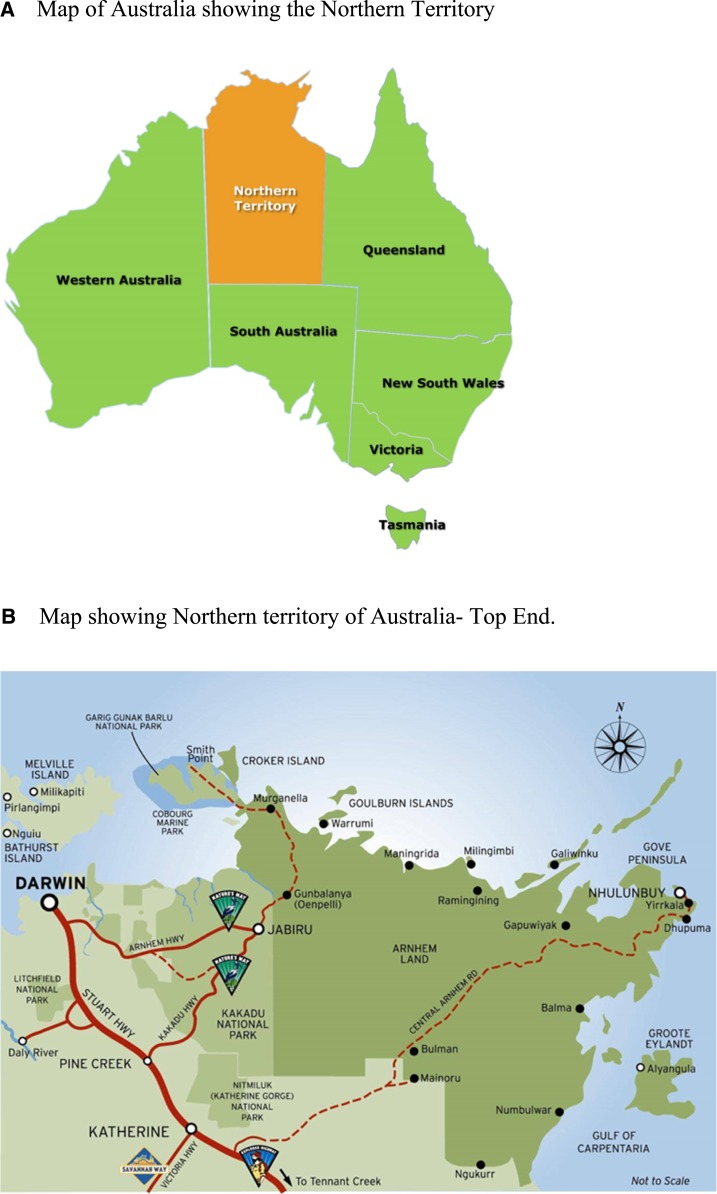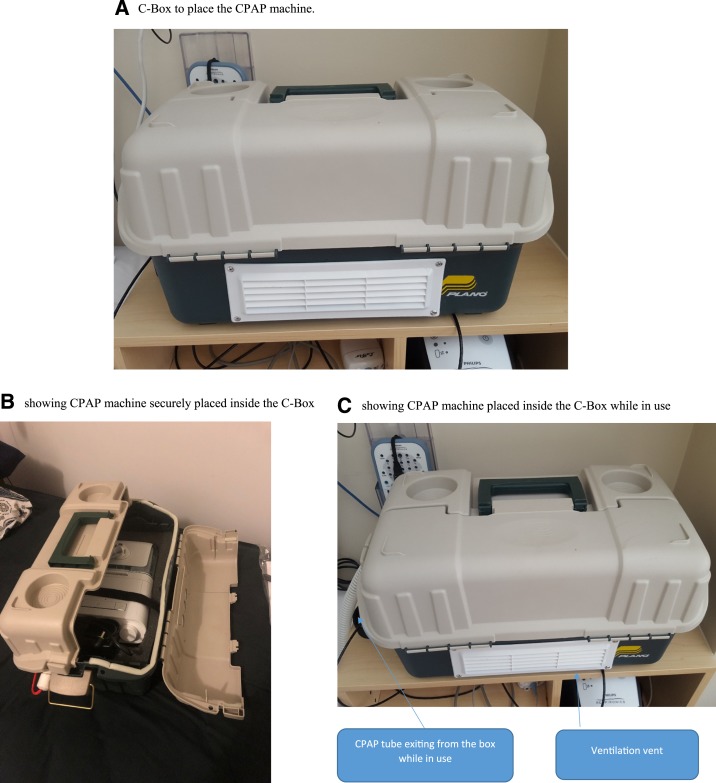Abstract.
Cockroaches and other pests infestation of continuous positive airway pressure (CPAP) equipment has been rarely reported in the medical literature. In this report, we describe a box (C-Box) designed to prevent pest infestation of the CPAP equipment. Over experience, using this C-Box has demonstrated that it can prevent pest infestation and reduce the cost of replacing pest-infested CPAP machines.
INTRODUCTION
The prevalence of obstructive sleep apnea (OSA) in adult populations worldwide is reported to be between 3% and 7%.1 In Australia, similar prevalence of OSA have been reported and predicted to continue to rise because of the increasing incidence of obesity and aging population.2,3 Increasing accessibility to diagnostic and treatment modalities, such as continuous positive airway pressure (CPAP) therapy for people living in regional and remote areas, more so in people with low socioeconomic status has led to more patients being diagnosed and treated with CPAP therapy.4–6 In the Northern Territory of Australia, the demographic profile is spread over a vast geographical area, with 81% of the indigenous population living in remote or very remote areas.7
The northern part of Australia is also noted to have tropical weather conditions, and humidity is also high most of the year around (Figure 1A). The unique weather pattern facilitates as a breeding ground for several organisms, including cockroaches. Over the past several years, we have frequently encountered pest infestation of CPAP equipment, especially in regional and remote areas. Because of lack of clear procedure protocols to disinfect and reuse the CPAP machine and also for concerns of adverse health consequences of continued use of such cockroach-infested CPAP equipment, we have been discarding the device and replacing it with new equipment. To address this unique issue, we designed a simple box to securely place the CPAP device to prevent pest infestation, and we would like to share our experience through this report.
Figure 1.
Map showing (A) Australia and (B) the Northern Territory of Australia—top end. This figure appears in color at www.ajtmh.org.
CASE EXAMPLE
Background.
A middle-aged male diagnosed to have severe OSA was treated with CPAP with good effect. He lived and worked in a remote indigenous community about 1,000 km from the capital city Darwin in the Northern Territory of Australia (Figure 1B). Unfortunately, he had to cease using his CPAP therapy because of recurrent cockroach infestation of his CPAP equipment. He also had to cease the therapy for several months as he was unable to access help for his CPAP issues as he lived in a very remote community.
Through our service, we have encountered several such patients as described earlier for the last few years. We have not only have encountered cockroach infestation but also ants and rodents damaging the device and also the tubes/masks (Figure 2A–C). We have been desperately exploring options to tackle the issue and meanwhile, our practice has been replacing the infested CPAP with a brand-new device and accessories. Obviously, this has increased the cost to our service and resulted in increased health resource utilization as most of the CPAP equipment’s are funded through the health department. Hence, we designed a user-friendly simple box to prevent pest infestation of CPAP equipment.
Figure 2.
(A) Showing cockroaches in continuous positive airway pressure (CPAP) machine. (B) Showing ants in the CPAP machine. (C) Showing the CPAP tube damaged by rodents. This figure appears in color at www.ajtmh.org.
C-box.
We initially experimented with various enclosure devices before settling on this hip roof box presented in this report (Figure 3A) (we named it C-Box) to fit the CPAP machine securely within this box (Figure 3B). The box was designed in such a way that insects and cockroaches cannot have direct access to the CPAP equipment while the CPAP is in use (Figure 3C). Vents for air intake and heat-resistant foam were used to secure the CPAP (Figure 3C). The C-Box was repeatedly tested to find the best combination of materials and covers to enable quick and easy unpack and pack up. The box was designed in such a way that the CPAP tubing and masks can be placed inside the box after overnight use so that cockroaches or other pests cannot have access to the CPAP machine or accessories while it is not in use. The C-Box has been repeatedly tested and trialed on a regular basis, and our patient has not reported any difficulty in operating the device. Moreover, the aforementioned patient has been successfully using the C-Box without any further cockroaches’ infestations for more than a year. Furthermore, the C-Box is also been used to protect the CPAP during travel and tropical weather conditions.
Figure 3.
(A) C-Box to place the continuous positive airway pressure (CPAP) machine. (B) Showing CPAP machine placed inside the C-Box. (C) Showing CPAP machine placed inside the C-Box while in use. This figure appears in color at www.ajtmh.org.
DISCUSSION
Despite overwhelming evidence to suggest that OSA is prevalent all over the world and CPAP is a well-established treatment modality, pests, including cockroach, infestation of CPAP equipment has been rarely reported in the medical literature. Likewise, cockroaches are also found all over the world and it is likely that this issue is under-reported. However, there are some reports of this in the social media blogs.8
The New World Encyclopedia on Cockroaches9 suggests that cockroaches have been known to exist on our planet for over 320 million years. This makes them one of the oldest of fossilized insects, and they may have been the first flying animals. Cockroaches are considered to be slimy, smelly, food-consuming pests, and they also produce disagreeable odors from some glandular secretions and do consume various household items such as food, paper, and clothing. However, we are not entirely clear why cockroaches get attracted to CPAP equipment. Cockroaches live in a wide range of environments around the world, with tropical and subtropical the most common climates and with the greatest diversity in the tropics. Tropical weather at the Northern Territory of Australia may make it an ideal environment for cockroaches to survive and may be the reason that we encounter this issue. Cockroaches are considered to be nocturnal insects in their behavior and it is possible that they get attracted to the CPAP machine while it is being used in the night; moreover, presence of water in the humidifying chamber may be a welcoming factor as well.
We have trialed the C-Box in few patients with similar good results. The operation is easy for the patients to understand. We believe our C-Box presented here seem to function well in preventing insects and cockroach infestation. Furthermore, the box can be used to protect the CPAP device while traveling, especially in tropical weather conditions. We are also working on further design and safety of the C-Box.
We hope our experience presented here will prompt others to report similar cases. Our device can be adopted and used to prevent pest infestations in endemic regions or during travel to such regions. We believe this C-Box could be adopted in other parts of the world with similar problem. Furthermore, we hope major CPAP manufacturers can make changes/explore options to prevent insect infestation of CPAP equipment.
Acknowledgments:
We thank Claire Kerslake, Siji Issac, Respiratory Clinical Nurse Consultant, Royal Darwin Hospital, and Tiziana Buysman, manager and Rochelle Calderon, Sleep Technologist, at Darwin Respiratory and Sleep Health in coordinating patient care.
Note: S. W. has been issued patent number 2019901957.
REFERENCES
- 1.Punjabi NM, 2008. The epidemiology of adult obstructive sleep apnea. Proc Am Thorac Soc 5: 136–143. [DOI] [PMC free article] [PubMed] [Google Scholar]
- 2.Bearpark H, Elliott L, Grunstein R, Cullen S, Schneider H, Althaus W, Sullivan C, 1995. Snoring and sleep apnea: a population study in Australian men. Am J Respir Crit Care Med 151: 1459–1465. [DOI] [PubMed] [Google Scholar]
- 3.Mansfield DR, Antic NA, McEvoy RD, 2013. How to assess, diagnose, refer and treat adult obstructive sleep apnoea: a commentary on the choices. Med J Aust 199: 21–26. [DOI] [PubMed] [Google Scholar]
- 4.Kruavit A, Fox M, Pearson R, Heraganahally S, 2017. Chronic respiratory disease in the regional and remote population of the Northern Territory top end: a perspective from the specialist respiratory outreach service. Aust J Rural Health 25: 275–284. [DOI] [PubMed] [Google Scholar]
- 5.Woods CE, McPherson K, Tikoft E, Usher K, Hosseini F, Ferns J, Jersmann H, Antic R, Maguire GP, 2015. Sleep disorders in Aboriginal and Torres Strait Islander people and residents of regional and remote Australia. J Clin Sleep Med 11: 1263–1271. [DOI] [PMC free article] [PubMed] [Google Scholar]
- 6.Guglielmia O, Lanterib P, Garbarinoa S, 2019. Association between socioeconomic status, belonging to an ethnic minority and obstructive sleep apnea: a systematic review of the literature. Sleep Med 57: 100–106. [DOI] [PubMed] [Google Scholar]
- 7.Australian Bureau of Statistics , 2011. Estimates of Aboriginal and Torres Strait Islander Australians. Canberra, Australia: ABS. [Google Scholar]
- 8.American Sleep Apnea Association , 2017. Don’t Be Tempted to Buy a Used CPAP Machine at a Yard Sale, Even If it’s “Like New”. Available at: https://www.sleepapnea.org/dont-tempted-buy-cpap-machine-yard-sale/. Accessed January 21, 2019. [Google Scholar]
- 9.New World Encyclopedia contributors , 2017. “Cockroach”, New World Encyclopedia, 7 March 2017, 17:42 UTC, Available at: https://www.newworldencyclopedia.org/p/index.php?title=Cockroach&oldid=1003610. Accessed August 1, 2019.





